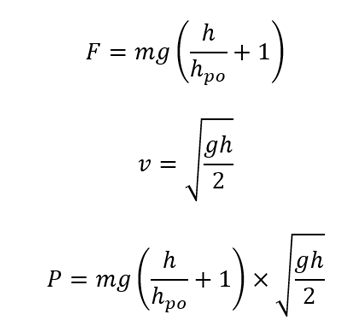
Every athlete is different. And the analysis of the force-velocity profile of athletes makes it possible to highlight some of these differences. For several years, scientific research has been very interested in force-velocity profiles because they are the expression of the contraction ability of the neuromuscular system as a function of the speed of a given movement. The team of Professor Jean-Benoit Morin and Pierre Samozino has highlighted in recent years that there is for each athlete an optimal force-velocity profile (see our article on the subject). According to their research, there would be athletes with a strength deficit and others with a speed deficit. The force-velocity profile would thus serve as an indicator, and would allow a more accurate training for each athlete.
The strength training with heavy load allow to reduce the strength deficit and the speed training, the speed deficit. But it seems easier to increase the load than to decrease it. To fight against this phenomenon with more or less success and increase the speed of movement, different methods exist: the projection of the load (jump), the negative load (assistance with elastic band, see our article on the subject) or only inertia (constant load compensated by an elastic assistance, see our article on the subject).
For some exercises involving body mass, such as vertical jumping, because of gravity, the velocities achieved may be limited. Especially as in vertical jump, the body mass corresponds to the optimal load, that is the load that allows the maximal power production. For the velocity training, it is necessary to reduce the load, and to train with a load lower than the athlete body mass. For this, it is possible to perform vertical jumps with elastic assistance or horizontal jumps on a rolling board. In this later case, the inertia related to the body mass remains constant, but the only resistance opposed to the movement will be the rolling resistance of the board. Compared to the vertical jump, what velocity is it possible to reach in horizontal jump ?
To answer this question, Pierre Samozino and his team compared the velocity, strength and power produced under different conditions of vertical jumps and horizontal jumps. To achieve this protocol, the researchers recruited 13 athletes. All participants completed a familiarization session and a test session. The tests consisted of making vertical jumps and horizontal jumps (concentric phase only) under four different conditions:

Figure 1. Illustration of a horizontal squat jump with elastic assistance.
For each jump, the subjects completed 3 trials (only the best trial was analyzed). A passive reflective marker was placed at the anterior superior iliac crest of each subject and the distances between the marker and the toes (during straight legs) and between the marker and the ground in the squat position were measured.
To obtain the values of velocity, force and power during horizontal squat jumps, the researchers used a force platform coupled with an optoelectronic system. To obtain these values during vertical jumps, the researchers used the following formulas :

With m, the total mass displaced (body mass + additional load, kg), g, the gravitational acceleration (9.81 m/s²), h, the height of the jump (in m) and calculated from the flight time measured by Optojump and hpo the push distance corresponding to the range of extension of the lower limbs (in m), calculated as the difference between the length between the marker and the toes and that between the marker and the ground.
Video 1. Horizontal squat jump band-assisted © Pedro Jimenez-Reyes
Video 2. Horizontal squat jump band-assisted © Pedro Jimenez-Reyes
The main results of this study show that horizontal squat jumps allow athletes to reach higher speeds than normal squat jump: + 24% without elastic band assistance (HSJ) and + 48% with elastic band assistance (HSJAssist).
The results are shown in Figures 2, 3 and 4. Concerning the force, each condition is significantly different (except for the two horizontal jumps). Concerning the velocity, each condition is significantly different. And concerning the power, significant differences exist between SJ and SJ60, SJ60 and HSJAssist and between SJ and HSJ. These results are similar to data obtained in studies with elastic assistance during vertical jumps with 15-20% of body mass (HSJ) and 30% of body mass (HSJAssist).
This jump variant makes it possible to explore velocities higher than the optimal velocity (that obtained thanks to a load close to the body mass) and thus makes it possible to train the neuromuscular ability of the lower limbs to produce force at very high movement/contraction velocity. In addition, this makes it possible to establish even more accurate force-velocity profiles, and in a very simple way.
The horizontal squat jump is a very interesting alternative to achieve high velocities of movement of the lower limbs. Training with this type of exercise could reduce a velocity deficit with the ability to work with a load smaller than body weight. Moreover, this exercise is easy to set up in all conditions: just a wall and a skateboard are needed. It can also be modified by pulling the athlete using an elastic band (according to the mass of the athlete and the degree of assistance wanted), and/or by placing an elastic band between the athlete and the wall to be able to make counter-movement jump (the length of the elastic should be greater than the length of the lower limbs).
We remind you that you can quote articles by limiting your quotation to 200 words maximum and you must include a nominative link to this one. Any other use, especially copying in full on forum, website or any other content, is strictly prohibited. In doubt, contact us.
Copyright © 2011-2024 - www.sci-sport.com - All rights reserved